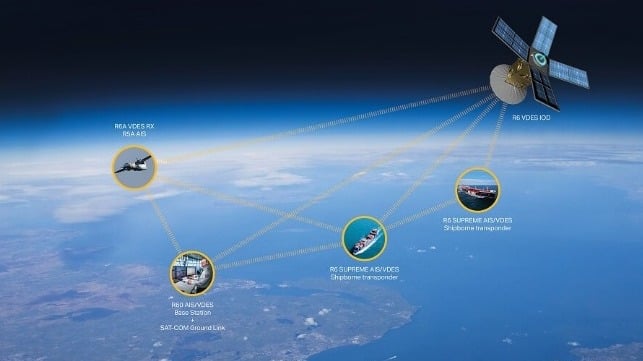After 20 Years of Service, AIS is About to Get a Big Upgrade

The Automated Identification System (AIS) has served the maritime industry for more than 20 years, and it has revolutionized the way that mariners, regulators and industry stakeholders do business. AIS makes it easy for watchstanders to identify a target and make passing arrangements, and it gives Vessel Traffic Service (VTS) operators the transparency they need to ensure safety on busy waterways. Thanks to satellite- and shore-based AIS reception, commodity traders and researchers can study marine traffic patterns for insight into the movements of global commerce.
However, the industry has gotten bigger and busier over the past two decades, and it's time for an update. In some coastal areas - the Singapore Strait, China's megaports, parts of Japan - there are so many vessels that the performance of AIS has been affected. As traffic density goes up, the system's range goes down, and the frequency of updates becomes more random. This has the biggest impact on shoreside observers like VTS operators, according to engineers for leading VDES system developer Saab TransponderTech.
The fix is to update classic AIS with a new digital system, something more robust and capable of handling more bandwidth. After years of consultation, maritime technology experts and regulators have come up with a solution: VDES (VHF Data Exchange System), a new system which will give operators higher security and reliability.
VDES will operate on additional new frequencies and will use them more efficiently, enabling 32 times as much bandwidth for secure communications and e-navigation. It will be able to handle higher traffic density and more frequent vessel movement updates, and it is designed to meet the needs of maritime users for the next 20 years.
It also has new features which AIS lacks. When two ships get close to each other, they will automatically exchange data on their future routes, not just their current positions. This will increase situational awareness and reduce ambiguity in traffic situations. Shoreside authorities can use the same data-transfer capabilities to broadcast digital updates, like safety-related text messages and boundary lines for cautionary areas.
VDES is also purpose-built for communication with low earth orbit (LEO) satellite constellations, ensuring genuine over-the-horizon connectivity from the start. Vessel Traffic Service (VTS) operators will be among the biggest beneficiaries, as satellite functionality will extend the range of reception and enable supervision over a larger area.
Cybersecurity is also enhanced thanks to VDES' ability to send encrypted positions, reducing the chance of spoofing. Onboard position tampering to disguise the ship's movements - a common technique used by vessel operators for sanctions violations, illegal fishing and smuggling - can be detected and thwarted.
Saab has developed a lineup of dual function AIS and VDES transponders to equip vessels with the next decade's technology, while keeping compatibility with current-generation AIS. Its R6 Supreme AIS/VDES satellite transponder is already in use with Danish company Sternula, which provides satellite connectivity for VDES and will be trialing the technology with select partners beginning in April. The Saab R60 base station, intended for stationary VTS applications, exceeds AIS transceiver specifications for sensitivity and can interface directly with Saab's maritime traffic control software platform.
